Introduction of Picture Windows
Picture windows are a great way to frame a beautiful view from the outside. Picture windows are a great way to make connections between the space inside and outside the building.
A picture window is used to frame a scene without obvious obstructions as if looking at a picture from a room.
The window has become a popular feature in modern self-build, renovation, and extension which gives wow-factor moments to the house.
In some areas, the wind is blowing with high speed and it is a concern to put a picture window in such an area. In such a case high-impact picture window can be placed.
What Is Picture Window?
Important Point
Picture windows suit both traditional and contemporary properties and can be best used in rural areas or coastal environments.
Thus, the outside view can be maximized so that people can enjoy the view using the picture window. As glass is the main organ in the window, there are no restrictions on its shape, size, or structure.
For example, for best results, a large-sized picture window is required and picture windows are used in places like bedrooms, living rooms, and kitchens in the house for excellent views. A rectangular picture window appears in most places.
Also, Read: Exploring the Functionality and Benefits of Hopper Windows for Homes
Purpose of Picture Windows
Picture windows are more commonly specified in kitchens in urban areas, providing a view of the garden, as well as helping to draw deeper natural light into the home.
A 90-degree frameless glass-to-glass corner can be created to get a real thrill, panoramic views, and stunning views. The inclusion of a comfortable seat near the picture window proves to be a very popular option.
Useful Article For You
- What Is a Contour Interval
- What Is Tile
- What Is the Difference Between a Shower Pan and a Shower Base?
- What Is a Window Panel
- Type of Arch
- What Is the Measurement for a Queen Size Bed
- What Is Considered Livable Space
- What Is One Way You Can Save Electricity?
- What Is a Bundle of Shingles
- What Is a Gallon of Water Weigh
- What Is Sand Blasting
- What Is a Span Bridge
- What Is the Little Black Diamond on a Tape Measure
- What Is a Louvered Door
- What Is a Spread Footing
- What Is Leveling
- Different Types of Beam
- What Is Pedestal
- What Is Plumbing Fixtures
- Soft Floors
- Difference Between Pier and Pile
- What Is Slab Construction
- What Is Calacatta Quartz
- What Is Auxiliary View
- Sheepsfoot Roller
- What Is 1 Flight of Stairs
- What Is Refractory Cement
- Dry Pack Concrete
- What Is Luminous Flux Vs Lumens
- What Is a Frost Wall
- What Is an Undercoat
- What Is Road Pavement
- Arch Foundation
- What Is a Stair Landing
- What Is a Spandrel Beam
- What Is Pier and Beam Foundation
- What Is a Pile Cap
- What Is a Mat Foundation
- What Is a Floating Slab
- What Is the Purpose of Foundation
- What Is a Flush Door
- What Is Residential Construction
- What Is the Best Foundation for a House
- What Is a Benchmark in Surveying
- What Is a Engineering Drawing
- Azimuth of a Line
- What Is an Admixture
- What Is the Standard Size Water Supply Line
- What Is the Difference Between Tension and Compression?
- What Is a Tremie
- What Is Tributary Area
- What Is Shoring Construction
- What Is a Cason
- What Is Wall Putty
- What Is the Difference Between Mortar and Concrete
- What Is Bhk
- What Is Sbc of Soil
- What Is Plinth Level
- What Is Water Proofing
- What Is Mix Design of Concrete
- What Is Fine Aggregate
- What Is Retention Money
- What Is Design Mix
- What Is Isometric Scale
- What Is Development Length
- What Is Superelevation
- What Is Wall Made Of
- What Is Micro Piling
- What Is Soil Stack
- What Is a Half Wall Called
- What Is Flagstone
- What Is a Cinder Block
- What Is Floors
- What Is a Parapet in Construction
- What Is Concept Drawing
- What Is a 30 Degree Angle
- What Is a Mezzanine Level
- What Is Plinth Area
- What Is Precipitation
- What Is a Soffit
- What Is the Difference Between Residual and Transported Soil
- What Is a Drop Manhole
- What Is Oblique View
- What Is a Flyover Bridge
- What Is Tie Beam
- What Is the Cost of 1 Bag Cement
- What Is Well Foundation
- What Is the Principle of Chain Surveying
- What Is Dlc in Road Construction
- What Are the Advantages of Levelling
- What Is Hardened Concrete
- What Is Plinth Protection
- What Is Wbm Road
- What Is Measurement Book
- What Is Traversing in Surveying
- What Is the Space Between Windows Called
- What Is a Moment Frame
- What Is 53 Grade Cement
- What Is True Slump
- What Is Joisted Masonry Construction
- What Is the Back Azimuth of 180 Degrees
- What Is Stretcher Bond
- What Is Consistency of Cement
- What Is Pointing
- What Is Design Period
- What Is Long Column and Short Column
- What Is the Full Form of Rcc
- What Is Centering in Construction
- What Is Stone Masonry
- What Is M30 Concrete
- What Is Dead Load and Live Load
- What Is Grouting
- What Is Grade Slab
- What Is Dpc
- What Is Lapping Length
- What Is Tar
- What Is Stucco
Picture Windows Size
The typical window widths are 2,3,4,6, and 8 (in feet). The height of this window can range from 1 foot to 8 feet. Large windows can be up to 72 inches in height and width.
If you want a window with a width or height greater than 72 inches, you have to choose the option of custom picture windows.
| WIDTH ( IN INCH ) | |||||||
|
HEIGHT
( IN INCH) |
DIM | 24 | 36 | 48 | 60 | 72 | 96 |
| 12 | 24″ x 12″ | 36″ x 12″ | 48″ x 12″ | 60″ x 12″ | 72″ x 12″ | 96″ x 12″ | |
| 18 | 24″ x 18″ | 36″ x 18″ | 48″ x 18″ | 60″ x 18″ | 72″ x 18″ | 96″ x 18″ | |
| 24 | 24″ x 24″ | 36″ x 24″ | 48″ x 24″ | 60″ x 24″ | 72″ x 24″ | 96″ x 24″ | |
| 36 | 24″ x 36″ | 36″ x 36″ | 48″ x 36″ | 60″ x 36″ | 72″ x 36″ | 96″ x 36″ | |
| 48 | 24″ x 48″ | 36″ x 48″ | 48″ x 48″ | 60″ x 48″ | 72″ x 48″ | 96″ x 48″ | |
| 52 | 24″ x 52″ | 36″ x 52″ | 48″ x 52″ | 60″ x 52″ | 72″ x 52″ | 96″ x 52″ | |
| 60 | 24″ x 60″ | 36″ x 60″ | 48″ x 60″ | 60″ x 60″ | 72″ x 60″ | 96″ x 60″ | |
| 62 | 24″ x 62″ | 36″ x 62″ | 48″ x 62″ | 60″ x 62″ | 72″ x 62″ | 96″ x 62″ | |
| 72 | 24″ x 72″ | 36″ x 72″ | 48″ x 72″ | 60″ x 72″ | 72″ x 72″ | 96″ x 72″ | |
| 96 | 24″ x 96″ | 36″ x 96″ | 48″ x 96″ | 60″ x 96″ | 72″ x 96″ | 96″ x 96″ | |
Also, Read: Embracing Natural Light: Exploring the Benefits of Garden Windows
Picture Window Installation
The installation process in the picture window can be done as a DIY project and can also be done by contacting a well-known brand.
The main thing in the picture window is the choice of glass and frame. Also, make sure that all the edges of the glass in this window are properly sealed.
Window proves to be less energy efficient if the edges are not properly sealed. The other thing is frame fitting. The frame also has to be installed properly so that there will be no problem in the future.
Considering the above, it is advisable not to install this window as a DIY project.
Also, Read: Jeld-Wen Vs Pella Windows
Picture Window Installation Cost
Fiberglass and vinyl picture windows are relatively inexpensive while wooden picture windows can be a bit expensive. The cost of installing this window depends on the material, brand, size, and area of labor. However, installing this window can cost approximately $ 375 to $ 780.
Large Picture Window Cost and Picture Window Cost Per Square Foot
The price of the picture window can be approximately $ 20 – $ 30 per square foot. But, if you want to use luxurious high-colored specific glazing in frames, the price per square foot is doubled.
The large picture windows price is higher than the small picture windows. This high price is a bit of anxiety in putting a big-picture window.
But for the benefits, it is worth it. Depending on the size, color, type, quality glass units, etc., the cost can also vary from $ 600 – $ 1200 per window.
It is imperative to optimize the big-picture windows for the home that can be installed with a customized degree of sun-heat protection, soundproofing, and glass reflection.
The matter corresponds to the needs because it is related to the location, climate, local noise pollution, and visual appeal.
Also, Read: How to Seal Windows for Winter: A Comprehensive Guide
Use of Picture Windows with Other Types of Windows
Flanker means placing one window unit next to another window unit. The use of a flanker is more common in the picture window.
Picture Window with Casement Flankers
The picture can be used in combination with other windows to make the window attractive. This different type of window should be chosen based on its use. There are many types.
Picture Window with Double Hung Flankers
For example casement picture windows, picture window with double hung sides, picture window with side windows, awning picture windows, sliding picture window, etc.
Sometimes an arched picture window can be obtained by placing an arch over the picture window.
The bay window configuration has a picture window in the middle and the side panel is flanked by venting. This type of window gives extra space with beauty.
The kitchen can have two wide casement windows above the sink and a large picture window with it. The kitchen picture window gives the kitchen a sense of grandeur. In addition to kitchen living room picture windows, a master bedroom picture window, and bathroom picture window can also be obtained.
A frameless picture window is useful for balconies, shower screens, and glass walls. Frameless windows are very useful to add aesthetic charm by keeping fixings and joints to a minimum.
Useful Article for You
- Zero Force Members
- How Much Does a Yard of Concrete Weigh
- Cmu Wall Meaning
- Gradient Road
- Budget Sunroom Ideas
- What Is Gypsum Board
- Types of Vaulted Ceilings
- How Does Baking Soda Remove Blood from Carpet
- What Are Forms in Construction
- How Heavy Is Dirt
- Tender Meaning in Architecture
- Dark Olive Green House
- Cast in Place Concrete
- Lean to Roof
- Grade Beam Foundation
- Window Sill Height
- Concrete Cold Joint
- Types of Traps
- Types of Pipe
- Wood Supporting Beams
- Finishing Plaster
- Home Depot Scrap Wood
- Lvl Beam Size Calculator
- Structural Shell
- Curb Types
- Msand
- Optimum Dry Meaning
- Disadvantages of Low-E Glass
- Bridge Abutment Definition
- Build Materials List
- Composite Masonry Wall
- Is Cedar a Hardwood or Softwood
- Modified Proctor Test
- Physical Properties of Sand
- Crane Machine Construction
- Door Frame Types
- How Much Does 55 Gallons of Oil Weigh
- Dog Leg Stairs
- Concrete Salt Finish
- Westpoint Bridge Builders
- Types of Porches
- Hempcrete Disadvantages
- Roof Pitch Types
- Types of Weirs
- Asphalt Floor
- Dutch Roof
- #6 Rebar Weight Per Foot
- Prizmatic Compass
- Bond Break Concrete
- Poured Concrete Wall Cost Calculator
- How Many 60 Lb Bags of Concrete in a Yard
- Wood Fence Post Spacing Chart
- Falsework
- Design of Building Structures
- Topping Slab
- Types of Cinder Blocks
- Fresh Concrete
- Door Colors for Red Brick House
- Clear Cover Concrete
- Tiles Brand
- Cement Consumption in Plaster
- Aggregate Density Kg M3
- Weight of Concrete Slab Calculator
- Is Clay Smaller Than Silt
- How to Calculate Dead Load
- Bad Concrete Work
- Stepped Foundations
- Residential Construction Cost Estimator Excel
- Different Construction Trucks
- Septic Pump Replacement Cost
- Dead Load Calculator
- Beam Vs Column
- Concrete Mix Ratio
- Caisson Foundation
- Glulam Beam Weight Calculator
- Bituminous Pavement
- M30 Mix Ratio
- Is 2502
- Reinforced Brick Work
- Plinth Level
- Trapezoidal Footing Formula
- Slab Steel Calculation
- Rolling Margin of Steel
- Top 20 Pvc Pipe Brands in India
- Top 5 Cement in India
- How Much Weight Can a 6×6 Support Horizontally
- Modulus of Rupture Formula
- Types of Curtains
- Building Estimate Excel Sheet
- How Is the Skeleton Similar to the Frame of a House?
- Which of the Following Best Explains Why Buildings Tip During Earthquakes?
- Rate Analysis of Civil Works
- Water Tank Company Name
- 1 Soot in Mm
- Reinforcement Lap Length Table
- Camber in Road
- Rate Analysis of Plaster
- Ply Company Name
- Boq Full Form in Tender
- Well Point
- Plastering Ratio
- Rcc Value Day
- How Many Brick in a Cube
- Monolithic Slab
- Lintel Beam
Types of Picture Windows
The picture window frame is made of different materials and has the following types depending on it.
1. Wood Picture Windows
Wooden picture windows give the house a classic aesthetic look and are very popular. Wooden windows are strong but require regular maintenance for weather resistance.
2. Aluminum Picture Windows
Aluminum picture windows are lightweight, durable, and extremely resistant to weather. These windows are available in many types. This window is very useful for a modern and polished look.
3. Vinyl Picture Windows
Vinyl picture windows are much cheaper, more durable, and easier to maintain. This window is the best option for a low budget.
4. Fiberglass Picture Windows
This window provides a nice mix of both strength and affordability. Fiberglass frames can last longer and be better energy efficient. The good thing about this window is that it does not bend. These windows can also be painted.
Low-E Glass and Insulated Glass Units
Low emissivity glass (Low-E glass) filters out harmful UV rays and reduces glare.
This type of glass has a thin metallic coating that reduces the amount of light transmission entering the house so the color of the furniture stops fading. Thus this glass prevents damage from direct sunlight.
An insulated glass unit is useful to keep out heat or cold. This glass reduces heat transmission so less energy is used to heat or cool the house which saves money.
This type of glass is made by attaching an insulating spacer with two pieces of glass and sealing the space in the middle.
Also, Read: Maximizing Space and Fresh Air: The Ultimate Guide to Folding Windows
Single Pane and Double Pane Glass
The pane is a big factor other than the material that affects costs. Price generally depends on the energy efficiency level of the pane. These things should be taken into consideration when doing picture window glass replacement.
1. Single Pane Glass
This window has the same level of glass and glazing so it is a less energy-efficient option, but the low cost plays a big part in making this pane attractive.
2. Double Pane Glass
There are two layers of glass and glazing in this window as a double pen is considered to be standard and provides the basic amount of insulation.
Also, Read: Ply Gem Windows: Reviews, Pros, Cons, and Cost Analysis
Picture Window Replacement
There may be several reasons why old windows should change but the main reason is security.
This large picture window was used many years ago when it was more common than double-hung or sliders but now modern technology has become much better.
This window is stronger and more durable. Since they are with a more stringent seal, they do not break easily and are more energy-efficient.
Incidentally, when the window cracks or a part breaks down, there is a need to change the window. A new modern picture window can be obtained by replacing the old window.
Picture window replacement costs can be approximately $ 425 to $ 795.
Also, Read: All About Casement Window
Clean the Picture Window
1. Use Strip Applicator
Soaking the long cloth head of the strip applicator in soapy water and turning it on the glass removes all the dirt. Weingard uses dishwashing liquid in a bucket of hot water for the cleaning solution. The less suds this is the better.
2. Use a Squeegee to Wipe Clean
Pull the squeegee over the soapy pane in a reverse-S pattern, starting from the top left. Wipe the blade of the squeegee with a lint-free cloth at the end of each stroke. Cloth diapers or old linen napkins are suitable for this purpose.
3. Dry Off Remaining Water Drips
The remaining water on the edges of the glass should be removed with damp, wrung-dry chamois. Doing so will remove the moisture on the glass without leaving streaks. It is necessary to dry the window seal with a rag.
Advantages of Picture Windows
Here is the list of Picture Windows Pros as follows.
1. Insulation and Weatherproofing
Traditional picture windows have all the edges tightly closed and cannot be opened. This prevents them from allowing air or water to enter or leave the house. picture windows are the best type in terms of energy efficiency as they are insulated fixed windows with Low-E coating, warm-edge spacers, and other energy-saving capabilities.
2. Lighting
The picture window has the option of customizing to make it larger than most other types of windows. This limits the need for artificial light in the house during the day and allows plenty of sunlight.
3. Maintenance
Picture Windows is very easy to clean and maintain. The main reason for this is that the picture window has no moving components and no hard-to-reach nooks and crannies.
4. Cost
Fixed windows do not have mechanical parts that need replacement when they fail so they are convenient and cost-effective. They usually cost less to install than the same-size sliding or casement windows.
Disadvantages of Picture Windows
Here is the list of Picture Windows Cons as follows.
1. Ventilation
The biggest disadvantage of this type of window is the lack of ventilation. Installing picture windows is not an efficient choice when relying heavily on ventilation to cool the house in hot weather. To solve this problem, there is a need to install more operable windows in the room.
2. Maintenance
When it comes to cleanliness, there are pros and cons. The lack of revolving parts of this window makes cleaning easier, but only from inside the house. The exterior of picture windows is difficult to clean, especially if they are large or installed on the upper floors.
3. Increase the Heat
Picture windows are usually very energy-efficient, but they also provide a lot of light, which means there is also the disadvantage of unwanted solar heat. U-factor and solar heat gain coefficient values also need to be considered to avoid additional heat problems.
4. Cost
Another dilemma for these windows is cost. Indeed, there are not many parts in Picture Windows that need to be replaced. However, over time, these windows wear out and the whole unit has to be replaced when such a situation arises. In this case, if some other window fails, the problem can be solved by replacing only certain parts.
What Is a Picture Window?
A picture window is a large, fixed window that doesn’t open and is designed to provide an unobstructed view of the outside scenery, similar to looking at a picture from inside a room.
Where Are Picture Windows Commonly Used in Homes?
Picture windows are often used in bedrooms, living rooms, and kitchens to maximize outside views and natural light.
What Are the Typical Sizes of Picture Windows Available?
Picture windows come in various widths, ranging from 2 to 8 feet, and heights from 1 to 8 feet. Larger windows can even reach up to 72 inches in height and width.
How Much Does It Cost to Install a Picture Window?
The cost of installing a picture window ranges from approximately $375 to $780. However, larger or custom-sized windows can cost between $600 to $1200 per window, depending on factors like material, size, and brand.
What Are the Different Types of Materials Used for Picture Window Frames?
Picture window frames can be made of wood, aluminum, vinyl, or fiberglass, each having its own advantages in terms of aesthetics, durability, and cost.
Are Picture Windows Energy-Efficient?
Picture windows can be energy-efficient if properly sealed and equipped with features like Low-E glass and insulated glass units, which help in reducing heat transmission and energy costs.
What Are the Advantages of Picture Windows?
Picture windows offer excellent insulation, abundant natural lighting, easy maintenance, and cost-effectiveness due to their fixed nature.
What Are the Disadvantages of Picture Windows?
Some drawbacks of picture windows include limited ventilation, difficulty in exterior cleaning for larger windows, potential heat buildup due to sunlight, and higher replacement costs for the entire unit when maintenance is needed.
Can Picture Windows Be Replaced?
Yes, old picture windows can be replaced, typically costing between $425 to $795. However, it’s essential to consider security, modern technology, and efficiency when replacing older picture windows.
How Can Picture Windows Be Cleaned Effectively?
Picture windows can be cleaned using a strip applicator soaked in soapy water, followed by wiping with a squeegee and drying off remaining water with a chamois.
What Should Be Considered When Choosing Picture Windows for a Specific Location?
Factors like sun-heat protection, soundproofing, and glass reflection should be considered based on location, climate, noise pollution, and visual appeal before installing picture windows.
Like this post? Share it with your friends!
Suggested Read –
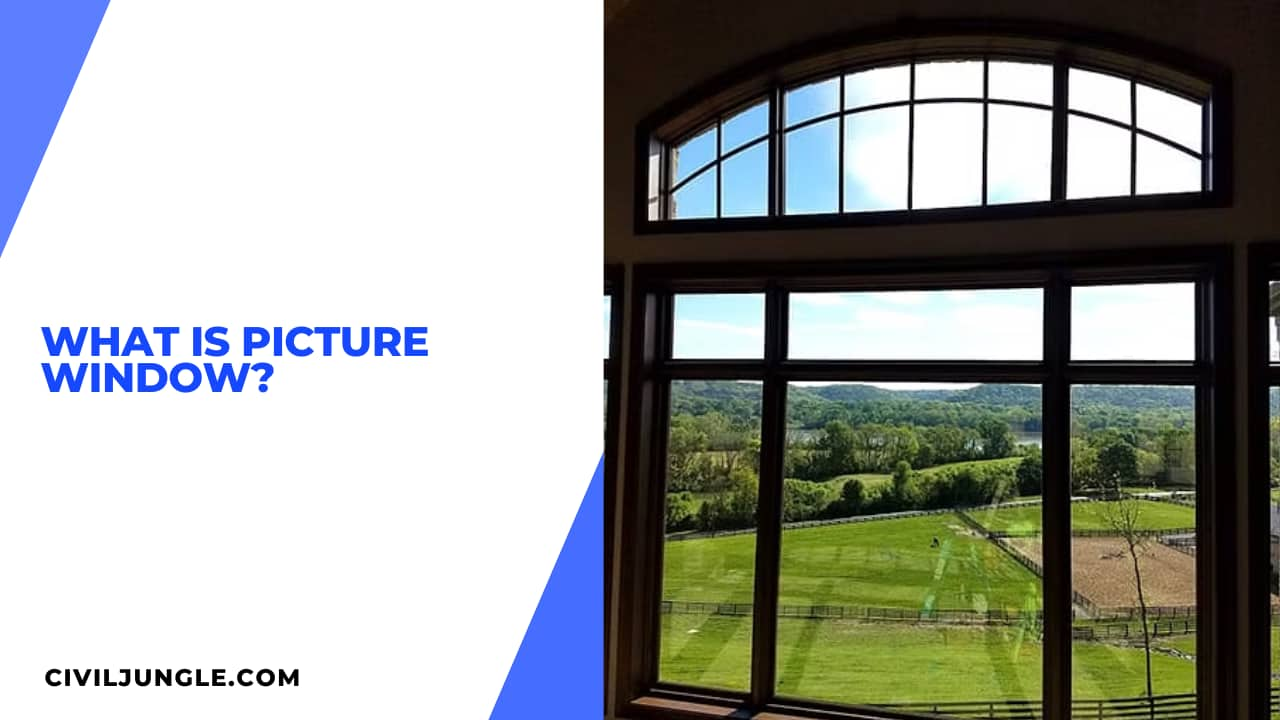
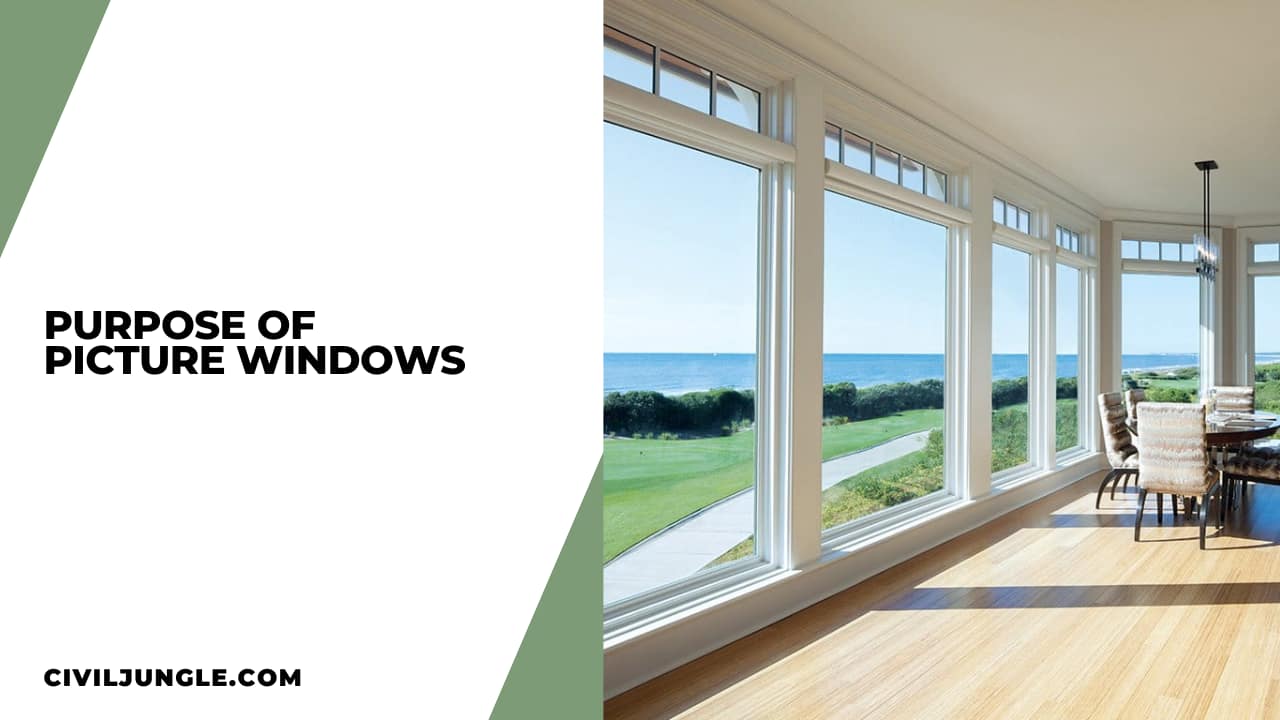
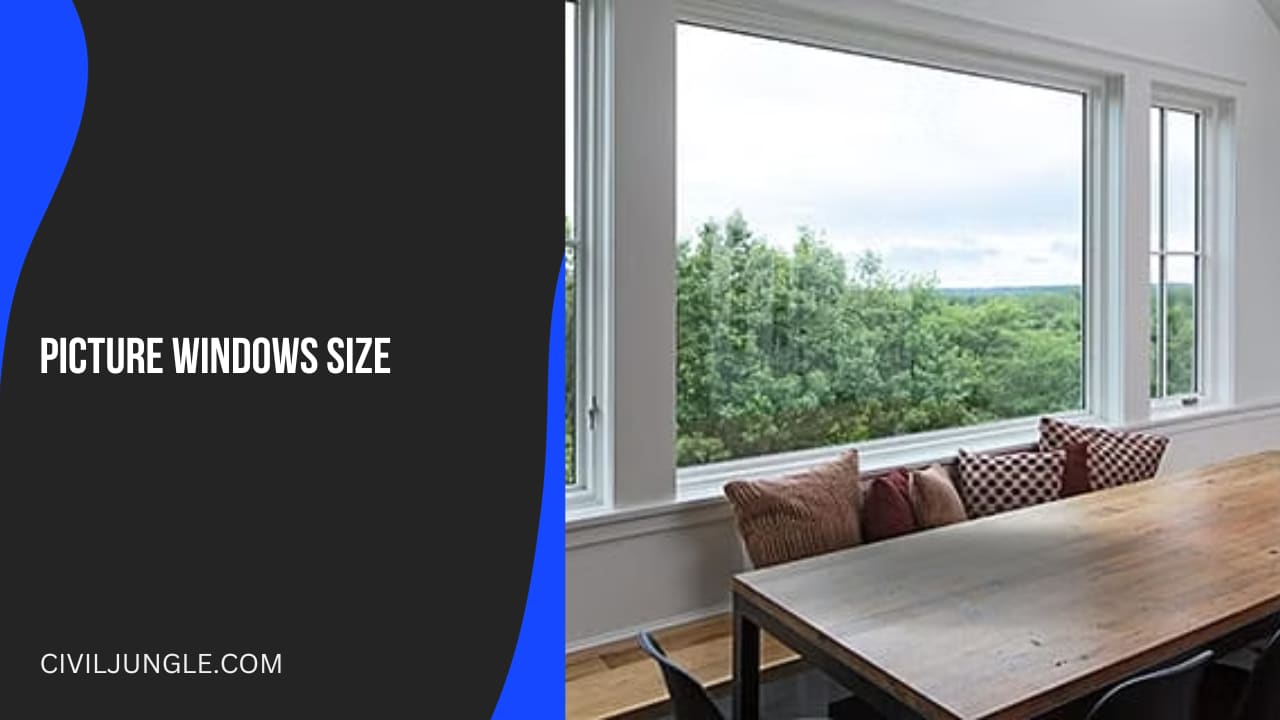
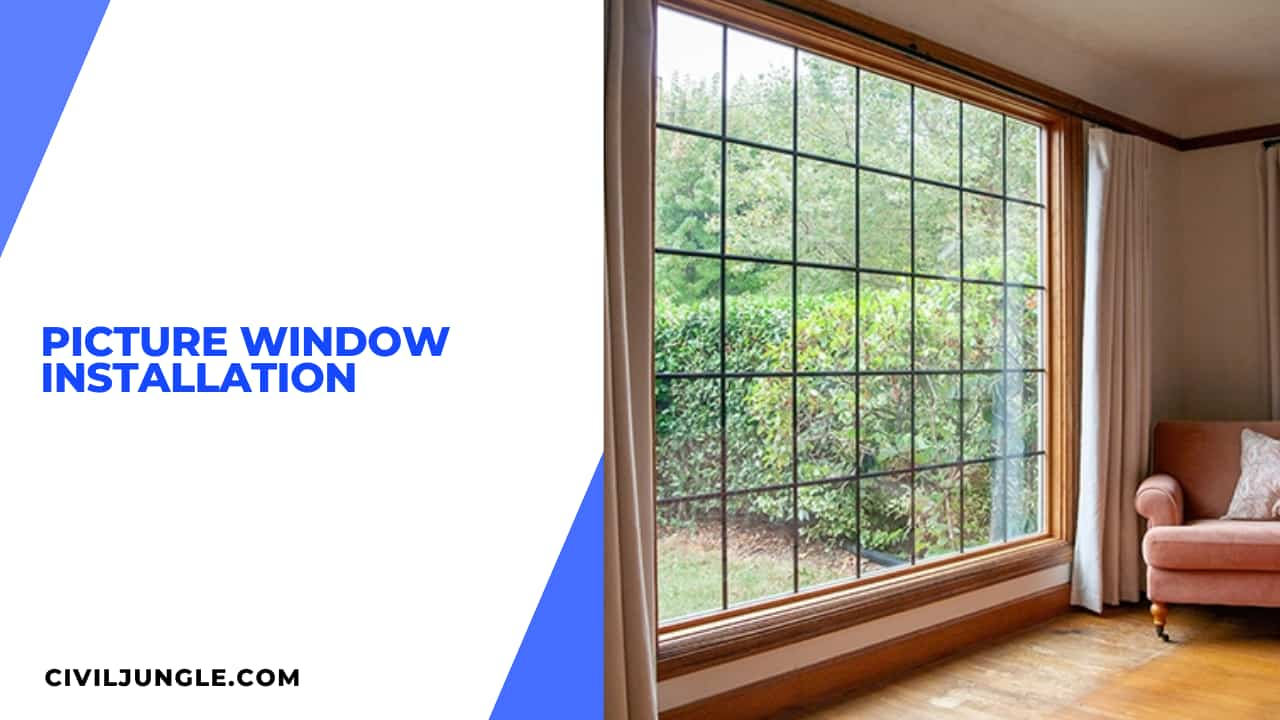

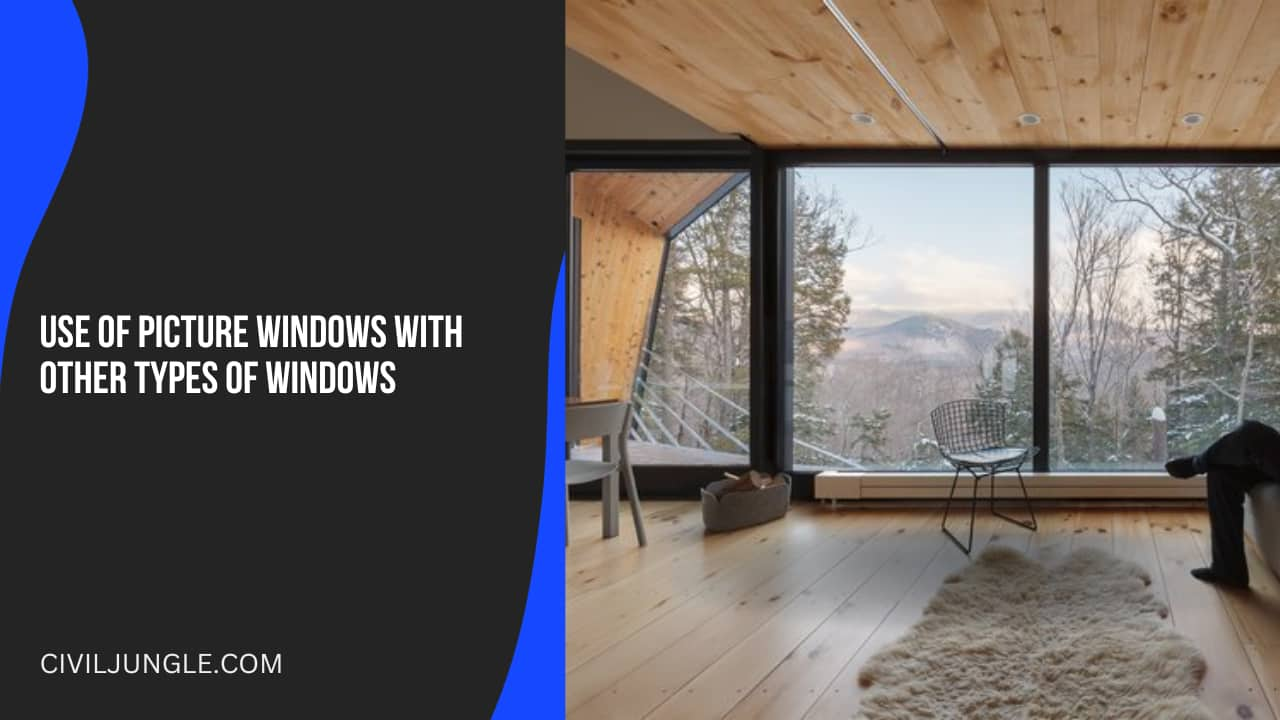
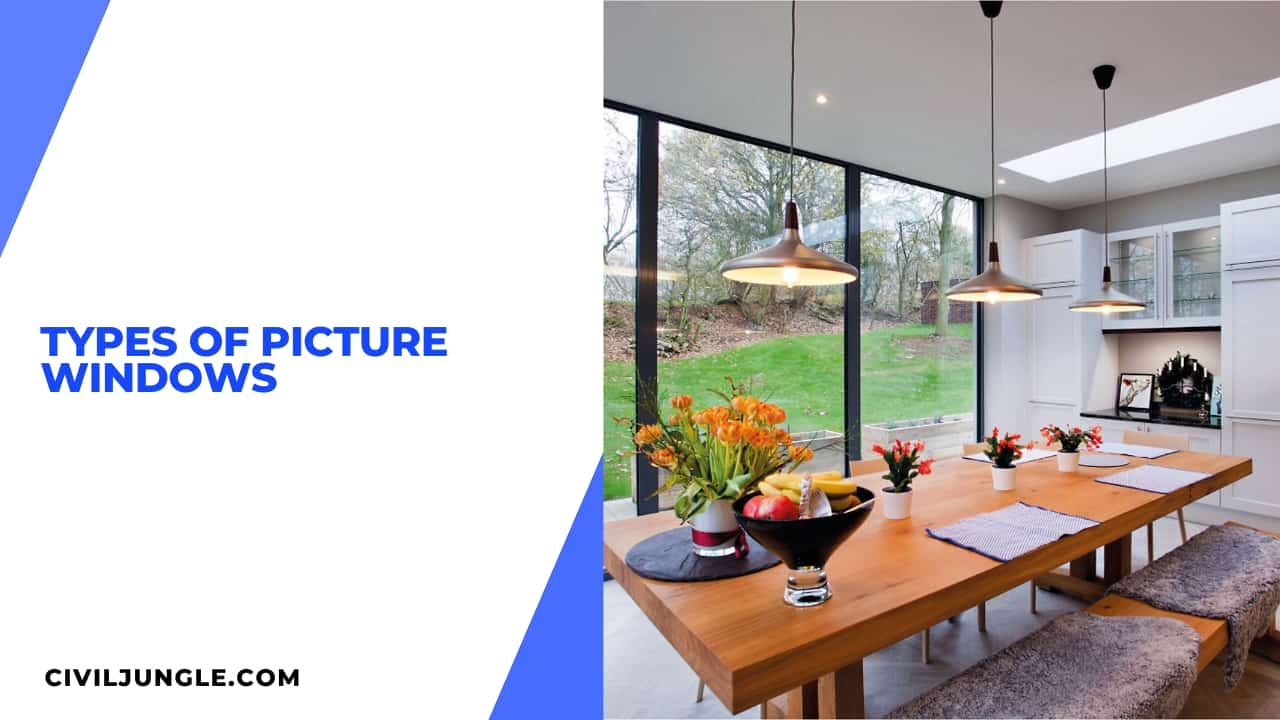
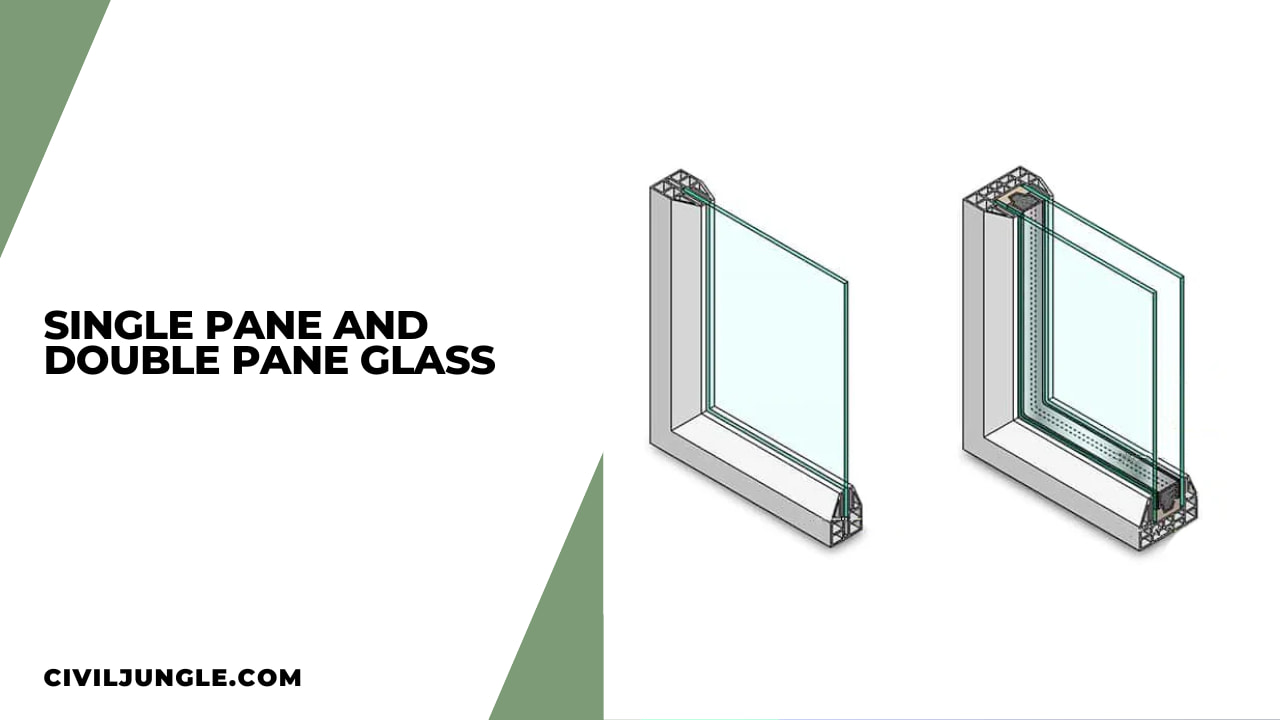
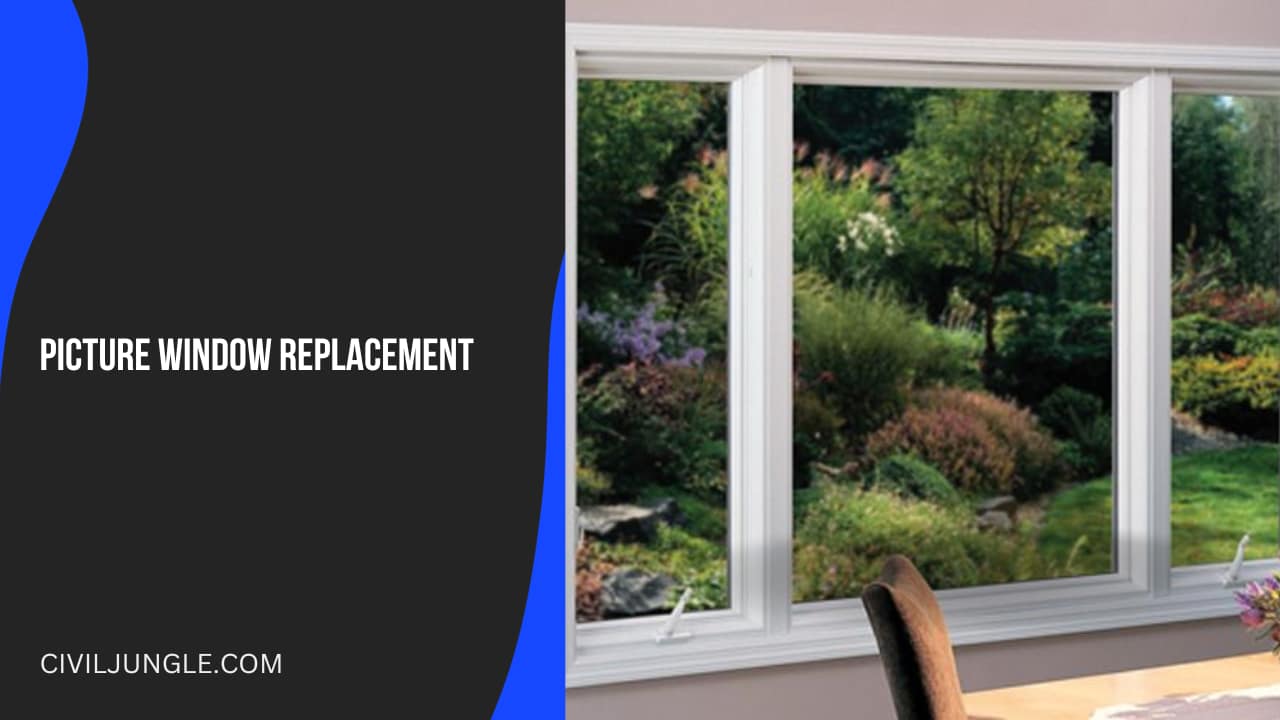
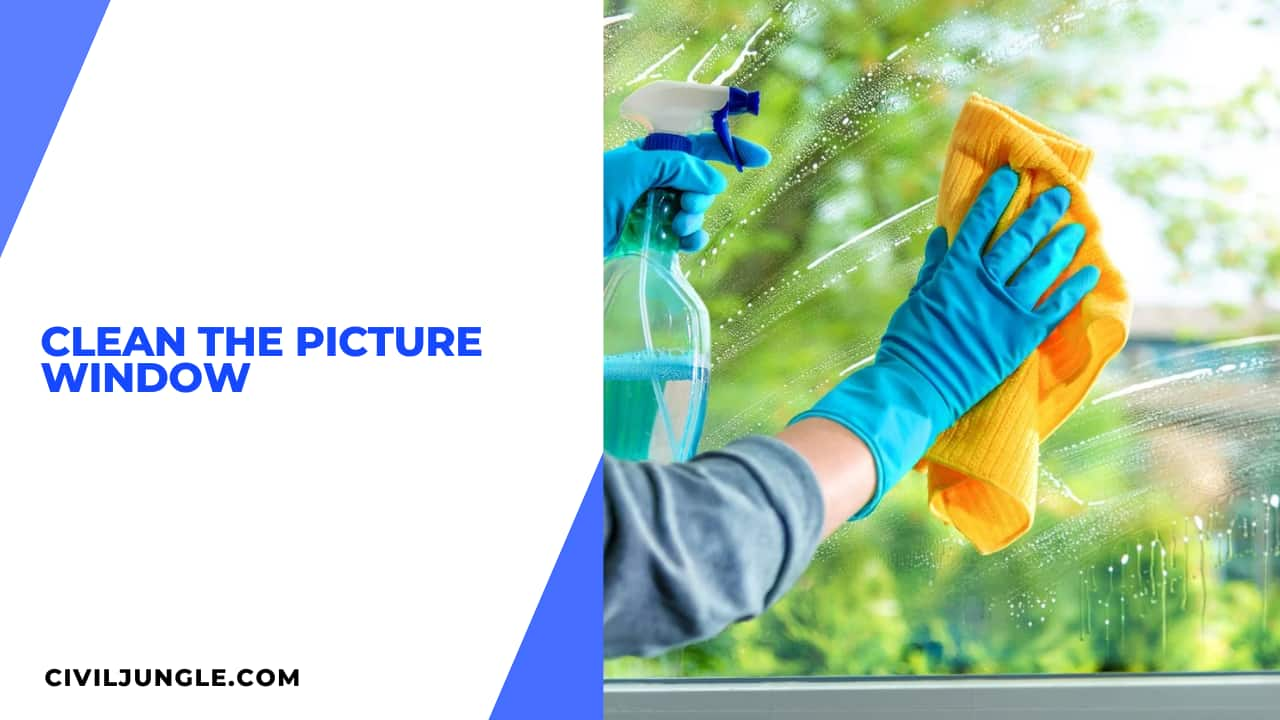

Leave a Reply